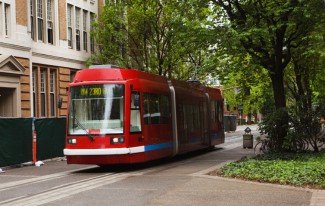ACEEE recently released Lifting the High Energy Burden in America’s Largest Cities, a report highlighting the financial burden energy costs can place on households in cities across the United States. The analysis found that the overwhelming majority of low-income households and households of color experience higher-than-average energy burdens. On average, the percentage of household income that low-income households pay on their home energy bills is more than three times what their higher-income counterparts pay. Energy efficiency can help reduce this burden and improve energy affordability for households.
Transportation costs are higher for low-income households
The elevated burden on low-income households is compounded by transportation costs which are the second largest expense for households in the United States after housing-related expenditures. The average household in the US spends almost 20% of its total income on transportation expenses. For low-income households, this average burden can be as high as 30%, according to a survey conducted by the Center of Neighborhood Technology (CNT) of 28 metropolitan areas across the country. As cities have grown outwards and jobs have moved away from urban cores, many low-income and minority communities are inadequately served by affordable and efficient transportation options. With personal vehicles serving as the primary mode of transport, expenditures for vehicle, fuel, insurance, and maintenance for these households can be very large and very unpredictable.
CNT’s Housing +Transportation Affordability Index emphasizes the importance of incorporating transportation costs into cost burden analyses by providing an overview of affordability at the neighborhood level that packages housing and transportation costs together. Their research has found that, among the 337 metropolitan areas included in the H&T index (which captures 80% of the US population and 90% of US GDP), the number of communities considered affordable drops dramatically when the definition of affordability includes not just housing costs but transportation costs as well.
Likewise, when it comes to discussing household energy burden, heating and electric bills don’t tell the whole story. Transportation energy costs must be part of a discussion about the energy burden for low-income and minority households in the United States, especially since the amount a household spends on fuel is determined by factors such as location, access to public transit, and global oil prices—a factor that is out of household control.
Targeted policies and programs can help, but more research is needed
Protecting these households against an overwhelming transportation energy burden requires a targeted set of policies and programs to achieve a balance of housing and jobs, provide communities with transportation alternatives, and reduce commute distances. Encouraging the development of compact, transit-oriented home construction increases the likelihood that residents will have the option to use public transit and non-motorized modes of transport as their primary means of travel in order to save on car-related expenditures. Ensuring that home construction is mixed-income goes one step further in ensuring that the housing stock around transit hubs is financially accessible to low-income households, eventually removing occupants’ need to move farther from mass transit in order to find affordable living spaces, thus minimizing the expensive commute to job centers.
Additionally, implementing codes and laws to ensure that streets are connected and accessible to pedestrians, bicyclists, and public transit gives residents more travel options and more control over their transport expenses. Portland’s Pearl District is an example of these policies in practice. All homes within the district are within 500 meters of a transit stop and affordable housing is available for families and individuals earning less than 80% of the median income of the region.
When communities have convenient, affordable, and reliable alternatives to driving, household transportation expenditures can be controlled more effectively and protected against fluctuations in fuel prices. Additional research is needed to characterize the transportation energy burden for a variety of metropolitan areas, income groups, and household types to develop a coherent approach to addressing the total energy burden for communities in the United States.




